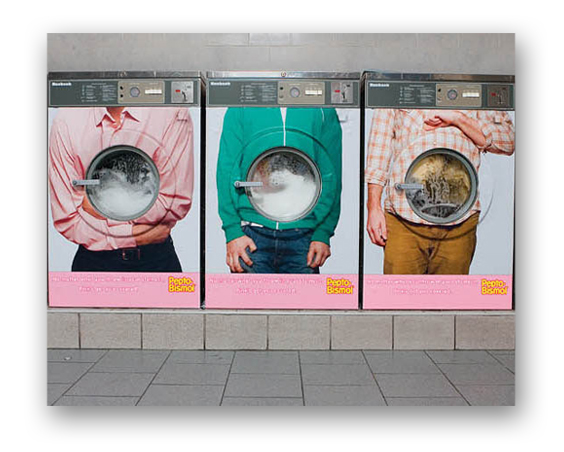Double-Take Guerrilla Marketing

Experiential street ads are the “sneak” attacks of advertising. They invariably occur in unexpected places and times, and they usually cause viewers to do a double-take and chuckle. Relative to major ad campaigns, guerrilla marketing is much less expensive, but its reach is also narrower, mostly limited to people in that proximity. But such targeted sight gags and visual puns enliven passersby experiences and generate goodwill toward the business, although it also disallows lengthy sales messages. You either get it or you don’t.
Still, guerrilla advertising is catching on with major brands who are discovering that you don’t have to be there to enjoy it. Really clever spots are being captured on smart phones and spread virally on social media, and some brand marketers are starting the buzz themselves by posting a photo of the “street art” on social media.



